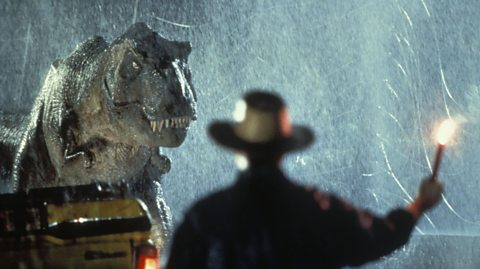It seems the silver screen is having its very own space race.
In 2020, Tom Cruise let the world know of his intentions to become the first actor to shoot a film in outer space. A year later, a Russian film crew did just that when they flew out to the International Space Station to shoot their feature film Challenge.
Meanwhile, plans are underway to build the world’s first space-based studio as early as 2024 by US based company Axiom.
But while filming whilst in orbit is certainly ambitious, there are plenty of other movies that have filmed in dangerous or remote locations. Here are six times Hollywood ventured to inhospitable places to make movies.
Inside an unfinished nuclear reactor (The Abyss, 1989)
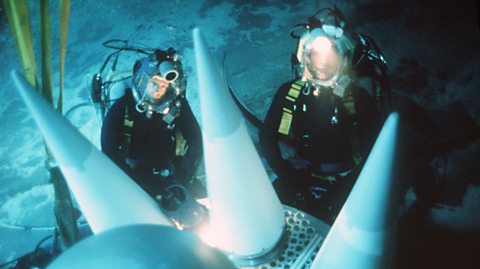
Director James Cameron’s underwater adventure The Abyss was set deep below the Caribbean Sea. To recreate the pitch black depths of the ocean Cameron shot much of his film in one of the containment tanks at a half-finished nuclear power plant in Gaffney, South Carolina.
Cameron filled the tank with seven million gallons of water but even though the water was 40 feet deep, there was still too much light, so the director used vast tarpaulins and millions of tiny black floating balls to produce pitch-black conditions underwater.
Shooting in this unusual location was dangerous and difficult. Actors spent so much time under water they had to decompress before surfacing (to avoid suffering a serious condition that can afflict divers called ‘the bends’, in which nitrogen bubbles form in the diver’s blood, possibly causing heart attacks and strokes). Actor Ed Harris also had a terrifying experience when he nearly drowned shooting a scene.
Cameron never dismantled the set, and it rotted away in the watery depths until the power station was demolished in 2007.
In the middle of a radioactive desert (The Conqueror, 1956)
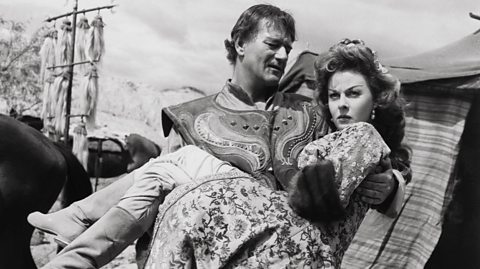
John Wayne was one of the biggest stars in the world when he agreed to appear in The Conqueror, a 1956 historical epic in which he played Emperor of the Mongol Empire, Genghis Khan.
Much of the film was shot in the Utah desert, but the previous year above ground nuclear tests had been carried out at the Nevada National Test site at Yucca Flat, only 130 miles downwind from the location.
The cast and crew were assured by the government that the location was safe to film at, though an unconvinced Wayne reportedly brought a Geiger Counter (a device to measure radiation) to the set each day. It supposedly cracked so loudly he assumed it was broken.
In the years that followed, people who had been at the location developed cancers, many of them sadly dying of the disease, including Wayne and director Dick Powell. It's widely thought that the site they filmed on at least contributed to this, although this has never been definitively proved.
Deep in the Peruvian jungle (Fitzcarraldo, 1982)
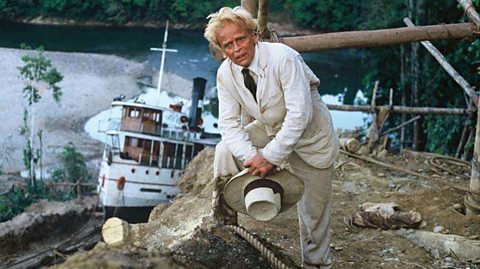
Werner Herzog’s classic film Fitzcarraldo tells the story of a wealthy rubber baron (played by Klaus Kinski) who is determined to haul a steamship over a mountain deep in the jungle.
Herzog, who is no stranger to unconventional shooting methods (he hypnotised his entire cast for his film Heart Of Glass in 1976), not only decided to recreate the feat for real, demanding his cast manually haul a 320 tonne ship, he shot much of the movie in the middle the Peruvian jungle, leading to his original star, Jason Robards, departing early suffering from dysentery.
But the disasters didn’t stop there. One crew member was bitten by a poisonous snake and had to self-amputate his foot, the cast were driven insane by mosquitoes, at one point the camp was burned down by enraged locals. Finally disagreements between local tribe members, who had been hired as crewmembers, and Kinski led to threats to murder the notoriously temper-prone star.
It all left Herzog with a pretty dim view of the jungle. “I have a very stark view of the jungle,” he said. “I think the jungle is vile and debased and full of lewdness and obscenity.”
In the middle of a real civil war (Apocalypse Now, 1979)

Apocalypse Now, Francis Ford Coppola’s epic Vietnam War movie, is widely regarded by critics as one of the greatest war films ever made, and is equally famous for the catastrophes that befell the production while it was being filmed.
A typhoon demolished the vast sets early on in production. Star Martin Sheen had a heart attack midway through filming, possibly brought on by the stress of the project. The budget ballooned from $14 million to $31 million, and the shoot, which was meant to last 14 weeks, spiralled out of control. Finally finishing filming and editing the movie would take three years (it was so delayed that industry insiders referred to it as ‘Apocalypse Later’).
But one of the most serious problems was that Coppola had decided to shoot the film in the Philippines, which was at the time in the middle of a real civil war. It meant that the dozens of helicopters vital for the spectacular battle scenes, which were on loan from the government, would often suddenly turn around mid-shot, having been called away to fight the real war. Each abandoned sequence cost tens of thousands of dollars.
“We were in the jungle, there were too many of us, we had access to too much money, too much equipment, and little by little we went insane,” Coppola would later say of the nightmarish experience.
12,500 feet beneath the Atlantic Ocean (Titanic, 1997)

What is it with James Cameron and water? Having shot The Abyss in a vast concrete tank, part of a half-built nuclear reactor, he decided to go several better for his romantic epic Titanic, filming the opening images of the film on the wreck itself.
The location of the infamous ocean liner, which sank on in 1912 killing over 1,500 passengers, had been discovered in 1985. Cameron, who had long been obsessed with the tragic story, was determined to use footage of the real wreck in his (fictional) film about events on board during the stricken ship’s last hours.
But first he had to convince the studio to pay for the immensely ambitious project. “I said, ‘Look, we’ve got to do this whole opening where they’re exploring the Titanic and they find the diamond, so we’re going to have all these shots of the ship. Now we can either do them with elaborate models and motion control shots and CG and all that, which will cost X amount of money, or we can spend X plus 30 percent and actually go shoot it at the real wreck,” he later said.
Starting in 1995 he made a total of 12 dives to the wreck 12,500 feet below the icy Atlantic, many lasting over 12 hours. It remains one of the most unusual, and inhospitable locations a Hollywood movie has ever used.
And it paid off. Even with its $200 million budget, Titanic was a monster hit, grossing $1.8 billion, a feat only surpassed by Cameron’s own Avatar 12 years later.
Halfway up Mount Everest (Everest, 2015)
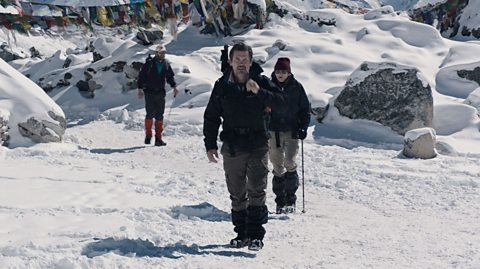
Mount Everest is one of the most dangerous places on the planet, even when you’re not trying to shoot a film there.
But that didn’t stop director Baltasar Kormakur deciding to shoot, at least partly, on the mountain for his 2015 film Everest, which depicted the awful day in 1996 when eight climbers died attempting to reach the summit.
The production was given rare permission to shoot at Everest base camp for two weeks. During the time they were there an avalanche struck, sadly killing 16 Sherpa people who were carrying supplies up the mountain in readiness for the climbing season. While the filmmakers were not at site of the disaster, they were nearby. It was a grim reminder of the deadliness of the location.
“When we were shooting at the climber's memorials, people started to get sick [from the altitude], and we had to evacuate pretty quickly,” Kormakur remembered of another day on set.
Later Kormakur turned to expert cameraman Kent Harvey to capture footage even further up the mountain on the Khumbu Icefall, an unstable glacier that moves as fast as four feet a day and is one of the peak’s most dangerous regions. “As we were approaching the Icefall, a large avalanche came down. It was quite a ways from us but it still gave us a scare and was very sobering,” Harvey later said.
Six blockbuster films that got history wrong
From Bohemian Rhapsody to Titanic, movie-makers have been very creative with historical timelines.
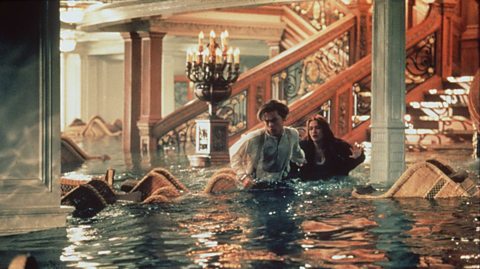
Six secrets of movie posters
Find out how movie posters are designed to encourage us to buy a ticket.
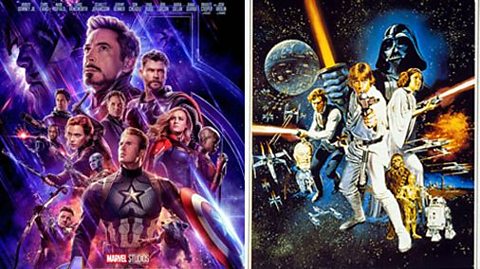
Five movies that got technology wrong
Hacking, Earth-saving viruses and enhanced images - these are Hollywood's most epic tech-fails.
